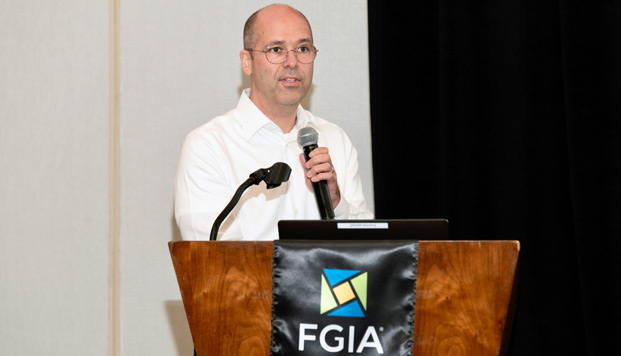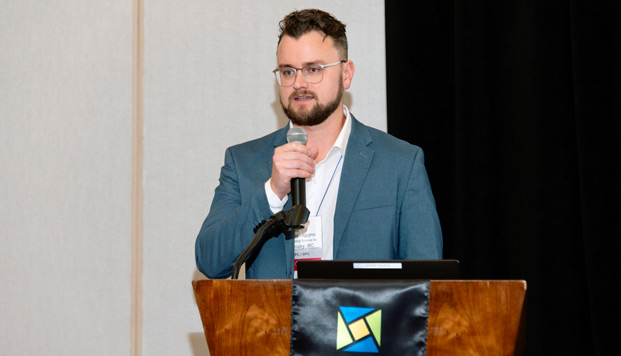
Two façade professionals provided expert insight at the Fenestration and Glazing Industry Alliance (FGIA) 2025 Fall Conference exploring what happens when the design assumptions of a façade do not fully match its behavior in the field. James Higgins and Gijsbert Libourel (RDH Building Science) presented “Beyond the Numbers | Testing the Truth Behind Curtain Wall Performance,” providing guidance on how apparent contradictions between analysis and testing can emerge and why real-world performance mock-ups are essential to gaining clarity.
Using examples that compare theoretical design predictions to full-scale testing outcomes, Higgins and Libourel highlighted how building movement, especially at corners and interfaces, can create conditions where opinions diverge and uncertainty grows. They shared how targeted testing combined with practical review of installation details can resolve uncertainty; demonstrate where systems can work or not work; and provide the confidence needed to make sound decisions.
“We are both from the West Coast, where seismic is big,” said Libourel. “A façade must be able to move with the building. If the building moves, the façade must be able to accommodate that without being crushed.”
There are two types of interstory drift, said Libourel: elastic (in which there is design displacement for small earthquakes and wind) and inelastic (in which a design takes much larger events into consideration). “Even with inelastic, you need to be able to get in and out of the building without the façade falling off,” he said. “With the ‘Big One,’ ‘don’t die’ is the only criteria.”
Per Libourel, there are three types of façade movement when it comes to interstory drift: racking, rotating and translating. Racking is when the frames move with the floors. Rotating is mostly in unitized curtainwalls. Translating appears mostly in prefabricated concrete or other large, stiff panel systems. That said, “most façade systems show some combination of all three.”

Higgins then explained the value of performance mockups, or PMUs, and the “truth in testing.” Do not underestimate your ability to verify your numbers, he warned.
“Testing can verify your analysis and show all the parts are moving as intended,” said Higgins. “I’m not saying every PMU I’ve ever done has passed, but any lesson you get from a PMU is valuable. The best lesson may be when it doesn’t go well, in fact.”
Mass timber can be used to mockup large stiff panels in a seismic zone, said Higgins. “While a full-scale PMU is best, it is not always possible,” he lamented.
Higgins explained there are other advantages to testing in advance, including saving time on site. “Real life testing always has benefits,” said Higgins. “We can learn how long a project will take to install, from design to approvals to installation time. That is a big benefit of PMU work.”
For more information about FGIA events, visit FGIAonline.org/events.
Your trusted industry resource, setting the standards for fenestration and glazing.


